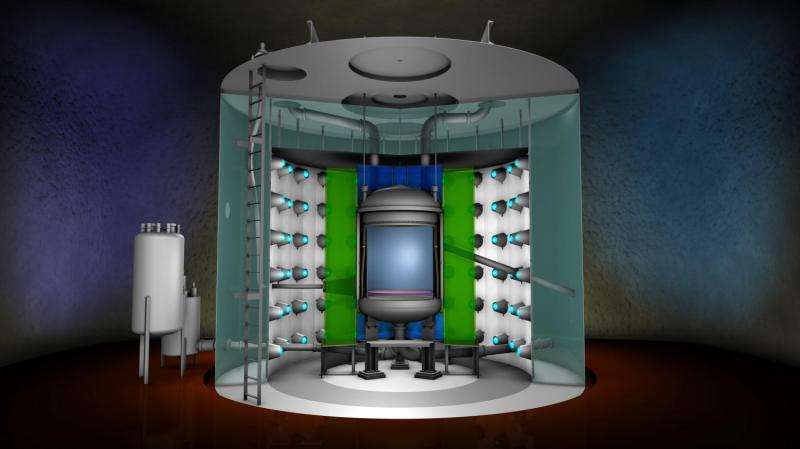SLAC is helping to build and test the LUX-ZEPLIN (LZ) detector, one of the biggest and most sensitive detectors ever designed to catch hypothetical dark matter particles known as weakly interacting massive particles (WIMPs). Credit: Greg Stewart/SLAC National Accelerator Laboratory
Researchers at the Department of Energy's SLAC National Accelerator Laboratory are on a quest to solve one of physics' biggest mysteries: What exactly is dark matter – the invisible substance that accounts for 85 percent of all the matter in the universe but can't be seen even with our most advanced scientific instruments?
Most scientists believe it's made of ghostly particles that rarely bump into their surroundings; that's why billions of dark matter particles might zip right through our bodies every second without us even noticing. Leading candidates for dark matter particles are WIMPs, or weakly interacting massive particles.
Now SLAC is helping to build and test one of the biggest and most sensitive detectors ever designed to catch a WIMP – the LUX-ZEPLIN or LZ detector. The following video explains how it works.
Credit: SLAC National Accelerator Laboratory
Provided by SLAC National Accelerator Laboratory
























